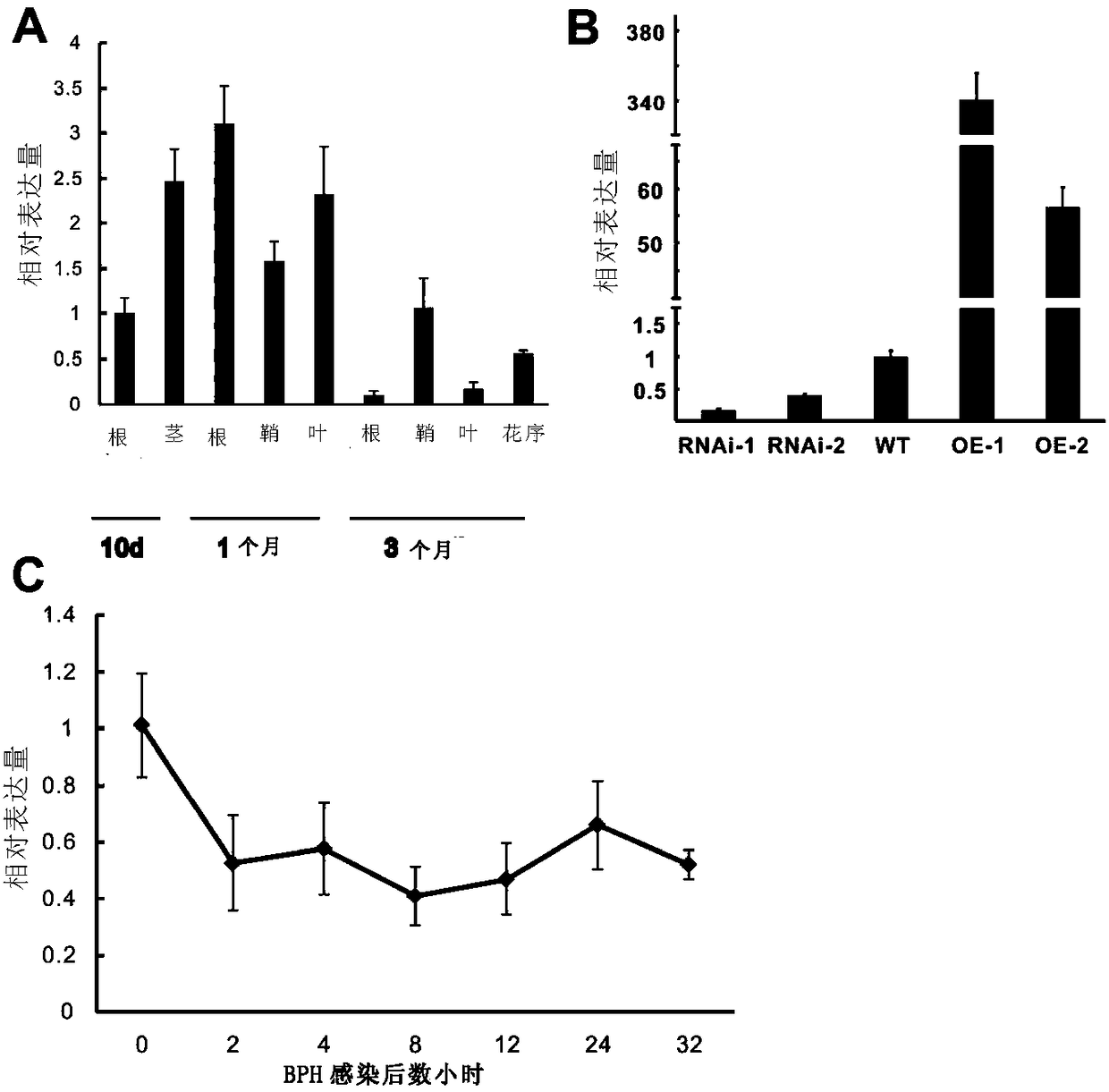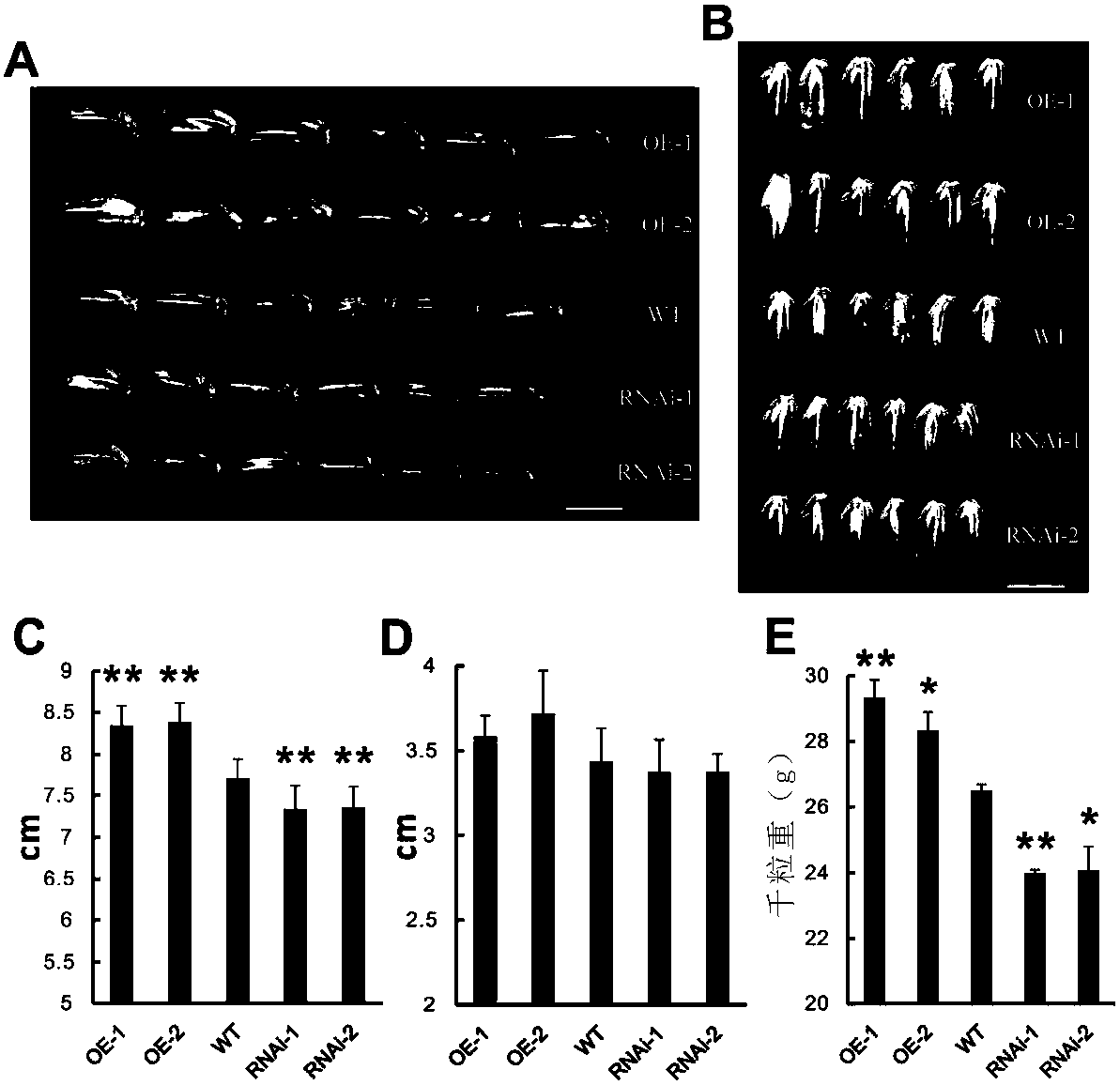Application of OsEXP10 gene in regulating rice growth and resisting nilaparvata lugens
A gene and resistance technology, applied in the field of agronomy, can solve problems that threaten food security, loss, etc.
- Summary
- Abstract
- Description
- Claims
- Application Information
AI Technical Summary
Problems solved by technology
Method used
Image
Examples
Embodiment 1
[0206] Example 1 Expression profile of OsEXP10 gene
[0207] After extensive screening of the T-DNA inserted mutant library previously stored in the laboratory, a mutant with an obvious insect-susceptible phenotype was screened. After analyzing the adjacent sequence, the adjacent sequence of the mutant was obtained. Through the expression analysis of the adjacent gene, it was found that the OsEXP10 gene in the mutant was significantly overexpressed. The sequence number of the OsEXP10 gene is LOC_Os04g49410 (http: / / rice.plantbiology. msu.edu / ). In this study, the expression pattern of the gene was first analyzed, and it was found that the expression level of the gene in different tissues of the growth period of one month was relatively high, while the expression level of the gene in different tissues of the three-month-old seedlings was relatively high. low volume ( figure 1 A).
[0208] During the research on brown planthoppers in our laboratory, we noticed that the OsEXP10 g...
Embodiment 2
[0210] Example 2 OsEXP10 gene overexpression and RNAi transgenic plant phenotypes indicate that it has the function of regulating rice growth and development
[0211] The rice OsEXP10 gene was cloned, and the coding region of the gene was constructed into the overexpression plasmid p1301-35SNos to form the OsEXP10OE plasmid, which was then transformed into the wild-type rice ZH11 background by Agrobacterium-mediated genetic methods. The expression of the OsEXP10 gene in the overexpression transgenic plant was detected, and the detection result ( figure 1 B) shows that the OsEXP10 gene is significantly up-regulated in the overexpression transgenic plants.
[0212] The transgenic plants showed obvious phenotypes, which were mainly reflected in: ①The plant height of the transgenic plants became higher ( figure 2 , A, B, C), but had no significant effect on tiller number of rice ( figure 2 D); ②The grains of the transgenic plants became larger ( image 3 ). ③ Scanning electr...
Embodiment 3
[0215] Example 3 OsEXP10 gene overexpression and phenotype of RNAi transgenic plants indicate that it has the function of regulating the resistance of brown planthopper
[0216] To detect whether the OsEXP10 gene mediates the resistance to N. lugens. The overexpression of OsEXP10 gene and RNAi transgenic seedlings grown for about 50 days were identified for their resistance to BPH. The results showed that, compared with the wild-type ZH11, the transgenic plants overexpressing the OsEXP10 gene showed an obvious phenotype of susceptibility to N. lugens ( Image 6 A), while the transgenic plants of OsEXP10 gene RNAi showed obvious resistance to BPH ( Image 6 B).
PUM
 Login to View More
Login to View More Abstract
Description
Claims
Application Information
 Login to View More
Login to View More - R&D
- Intellectual Property
- Life Sciences
- Materials
- Tech Scout
- Unparalleled Data Quality
- Higher Quality Content
- 60% Fewer Hallucinations
Browse by: Latest US Patents, China's latest patents, Technical Efficacy Thesaurus, Application Domain, Technology Topic, Popular Technical Reports.
© 2025 PatSnap. All rights reserved.Legal|Privacy policy|Modern Slavery Act Transparency Statement|Sitemap|About US| Contact US: help@patsnap.com



